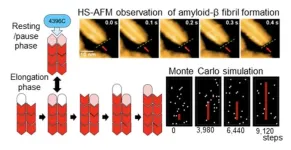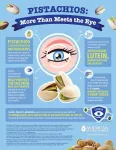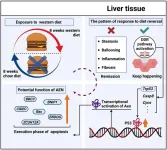(Press-News.org) BOSTON (Oct. 24, 2024) – Anaphylaxis can come on suddenly and without warning, and because its symptoms can be fatal, it is scary for those who encounter it. Two new studies being presented at this year’s American College of Allergy, Asthma and Immunology (ACAAI) Annual Scientific Meeting in Boston show it is not only patients and caregivers who misunderstand how best to treat anaphylaxis: emergency medical professionals often follow incorrect protocols for treating severe allergic reactions.
“We know early recognition of anaphylaxis and treatment with epinephrine improves outcomes,” says Sasha Alvarado, DO, Co-Director of Quality and Safety for the Division of Immunology, Allergy and Retrovirology at Baylor College of Medicine. Joni Chow, DO, Pediatric Resident at Baylor College of Medicine, San Antonio and lead author of the study explained, “We surveyed 96 patients and caregivers in an allergy clinic waiting room to evaluate knowledge of anaphylaxis and desired components of an anaphylaxis action plan. The results demonstrate the need for better education of allergy patients to recognize and treat anaphylaxis appropriately.”
Although 95% of the respondents in the study were prescribed epinephrine and 73% said they were comfortable with recognizing anaphylaxis symptoms, only 14% of respondents said they were very likely to use epinephrine first for anaphylaxis. The following were barriers to using epinephrine:
Not sure which symptoms to treat (40.6%)
Hesitant to go to the emergency room (24%)
Hesitant to call 911 (17.7%)
Not sure how to use epinephrine auto-injectors (11.5%)
Feared needles (5.2%)
A second study examined the differences across emergency medical services (EMS) in the United States regarding protocols used in the prehospital treatment of anaphylaxis. The study performed an analysis of statewide anaphylaxis protocols to identify gaps in the recognition of anaphylaxis and to provide areas for improvement in prehospital management.
“Many EMS anaphylaxis protocols are incomplete and/or outdated,” says Carly Gunderson, DO, lead author of the study. “The discrepancies include variations in the definition of anaphylaxis as well as in treatment.”
30 states – those with a mandatory Advanced Cardiac Life Support (ACLS) protocol were included in the study. Of the 30 states, only 50% (15) included gastrointestinal symptoms in the definition of anaphylaxis, and only 40% (12) included neurologic manifestations. 47% (14) used a two-organ system definition. For anaphylactic reactions, 100% (30) of protocols recommended diphenhydramine and epinephrine. 90% (27) recommended albuterol if respiratory symptoms were present, 73% (22) recommended intravenous fluids, and 60% (18) recommended steroids. Epinephrine was the first line recommendation for anaphylaxis in 97% (29) of protocols. 25 states (83%) allowed epinephrine autoinjectors and 17 (57%) provided autoinjectors.
The authors said it was surprising that many EMS protocols did not consider gastrointestinal or neurologic manifestations to be a component of anaphylaxis. Additional outdated recommendations included the use of steroids and first-generation antihistamines. Many protocols did not permit or provide epinephrine autoinjectors, despite their convenience and effectiveness.
Abstract Title: UNDERSTANDING OF ANAPHYLAXIS MANAGEMENT AMONG ALLERGY PATIENTS AND COMPONENTS OF A PATIENT-CENTERED ANAPHYLAXIS ACTION PLAN (See full abstract below)
Presenter: Joni Chow, DO
Abstract Title: DISCREPANCIES IN ANAPHYLAXIS PROTOCOLS ACROSS EMERGENCY MEDICAL SERVICES IN THE UNITED STATES – OPPORTUNITIES FOR IMPROVEMENT (Abstract below, minus table)
Presenter: Carly Gunderson, DO
For more information on anaphylaxis, or to find an allergist in your area, visit AllergyandAsthmaRelief.org. The ACAAI Annual Scientific Meeting is Oct. 24-28. For more news and research from the ACAAI Scientific Meeting, go to our newsroom and follow the conversation on X/Twitter #ACAAI24.
About ACAAI
The American College of Allergy, Asthma & Immunology (ACAAI) is a professional medical organization of more than 6,000 allergists-immunologists and allied health professionals, headquartered in Arlington Heights, Ill. Founded in 1942, the College fosters a culture of collaboration and congeniality in which its members work together and with others toward the common goals of patient care, education, advocacy, and research. ACAAI allergists are board-certified physicians trained to diagnose allergies and asthma, administer immunotherapy, and provide patients with the best treatment outcomes. For more information and to find relief, visit AllergyandAsthmaRelief.org. Join us on Facebook, Pinterest, Instagram and X/Twitter.
A001
DISCREPANCIES IN ANAPHYLAXIS PROTOCOLS ACROSS EMERGENCY MEDICAL SERVICES IN THE UNITED STATES – OPPORTUNITIES FOR IMPROVEMENT
C. Gunderson*1, S. Lopez2, K. Lukose3, N. Akar-Ghibril2, 1. Pembroke Pines, FL; 2. Hollywood, FL; 3. Boca Raton, FL.
Introduction: Across the United States, there are significant inconsistencies in the protocols used by Emergency Medical Services (EMS) in the prehospital treatment of anaphylaxis. These discrepancies include variations in the definition of anaphylaxis as well as treatment recommendations. This study performed an analysis of statewide anaphylaxis protocols to identify gaps in the recognition of anaphylaxis and to provide areas for improvement in prehospital management.
Methods: States with mandatory or model state-wide ACLS protocols were included (total of 30). Each allergic reaction and/or anaphylaxis protocol was reviewed – emphasis was placed on the definitions used to identify reactions and treatment algorithms.
Results: Of the 30 states, only 50% (15) included gastrointestinal symptoms in the definition of anaphylaxis, and only 40% (12) included neurologic manifestations. 47% (14) used a two-organ system definition. For anaphylactic reactions, 100% (30) of protocols recommended diphenhydramine and epinephrine. 90% (27) recommended albuterol if respiratory symptoms were present, 73% (22) recommended intravenous fluids, and 60% (18) recommended steroids. Epinephrine was the first line recommendation for anaphylaxis in 97% (29) of protocols. 25 states (83%) allowed epinephrine autoinjectors and 17 (57%) provided autoinjectors.
Conclusion: Many EMS anaphylaxis protocols are incomplete and/or outdated. Surprisingly, many protocols do not consider gastrointestinal or neurologic manifestations. Additionally, many contain outdated recommendations, including the use of steroids and first-generation antihistamines. Despite the convenience of epinephrine autoinjectors, many protocols do not permit or provide them. Given the frequency of EMS activation for allergic reactions, our communities would benefit from standardized protocols using current evidence-based guidelines for the management of anaphylaxis.
A002
UNDERSTANDING OF ANAPHYLAXIS MANAGEMENT AMONG ALLERGY PATIENTS AND COMPONENTS OF A PATIENT-CENTERED ANAPHYLAXIS ACTION PLAN
J. Chow*1, M. Stahl1, S. Alvarado2, 1. San Antonio, TX; 2. Houston, TX.
Introduction: Anaphylaxis is life-threatening, and early recognition improves outcomes. We aimed to assess patients' and caregivers' understanding of recognition and management of anaphylaxis and identify preferred components of a patient-centered action plan.
Methods: We developed a survey instrument assessing knowledge of anaphylaxis and desired components of an anaphylaxis action plan. Surveys were completed by 96 patients/caregivers in an allergy clinic waiting room.
Results: 95.8% of respondents were prescribed epinephrine. 73% agreed or strongly agreed with feeling comfortable with recognizing anaphylaxis symptoms, though only 14% correctly identified symptoms requiring epinephrine. Although 85% stated that antihistamines do not prevent the need for epinephrine, 23.7% would still treat with antihistamine first during an anaphylactic episode. In the setting of rash and wheezing after suspected allergen exposure, 64.5% would inject epinephrine while 10.8% would drive to the emergency room first. The following were barriers to using epinephrine: not sure which symptoms to treat (40.6%), not sure how to use epinephrine auto-injectors (11.5%), feared needles (5.2%), hesitant to call 911 (17.7%), hesitant to go to the emergency room (24%). 36.5% had an anaphylaxis action plan (AAP). The top desired components rated very or somewhat important on an AAP included: section for management of mild (non-anaphylactic) allergic reaction symptoms (93%), visuals of how to inject epinephrine (87.6%), visuals of anaphylaxis symptoms (81%).
Conclusion: This study demonstrates the need for better education of allergy patients to recognize and treat anaphylaxis appropriately and supports the use of visuals in creating a patient-centered AAP.
END
Anaphylaxis treatment remains confusing for patients, caregivers and emergency personnel
Two new studies show many don’t understand management of severe allergic reactions
2024-10-24
ELSE PRESS RELEASES FROM THIS DATE:
Penicillin allergy delabeling in syphilis patients assists in furthering treatment
2024-10-24
BOSTON (Oct. 24, 2024) – About 10% of Americans believe they are allergic to penicillin, and approximately 90% of those patients are not actually allergic. As a result, those with the penicillin allergy label are often prescribed more toxic, dangerous and expensive antibiotics that might not be necessary or effective. A new study being presented at this year’s American College of Allergy, Asthma and Immunology (ACAAI) Annual Scientific Meeting in Boston showed that syphilis patients labeled as penicillin allergic who are low risk should be delabeled to avoid treatment failure and other negative ...
Burning incense can pose health risks for those with allergies and asthma
2024-10-24
BOSTON (Oct. 24, 2024) – In many cultures, it is common to burn incense for religious and cultural practices, including meditations, celebrations and spiritual and ancestral worship. A new medically challenging case being presented at this year’s American College of Allergy, Asthma and Immunology (ACAAI) Annual Scientific Meeting in Boston warns that, for those with allergies and asthma, health problems from burning incense can be a significant risk to adults and children.
“Our patient was an 87-year-old woman with history of asthma and COPD, ...
Study: Parents’ understanding of atopic dermatitis may influence child’s diet
2024-10-24
BOSTON (Oct. 24, 2024) – Parents of children with atopic dermatitis (AD, also called eczema) know that the allergic condition can mean a heightened risk of developing food allergies. The desire to prevent food allergies causes some parents to consider elimination diets, cutting out certain foods from their child’s diet. A new study being presented at this year’s American College of Allergy, Asthma and Immunology (ACAAI) Annual Scientific Meeting in Boston showed that elimination diets in the case ...
Vaccine refusal lower in minorities in new study
2024-10-24
BOSTON (Oct. 24, 2024) – Throughout the Covid pandemic, media widely reported that Black patients were more likely than White patients to refuse vaccines, including the influenza and Covid vaccines. A new study being presented at this year’s American College of Allergy, Asthma and Immunology (ACAAI) Annual Scientific Meeting in Boston showed that self-identified non-White patients were less likely to demonstrate vaccine-hesitancy than the self-identified White patient group.
“We found ...
Risk of developing EoE high when other allergic conditions factored in
2024-10-24
BOSTON (Oct. 24, 2024) – Eosinophilic Esophagitis (EoE), a disorder of the esophagus, is increasingly recognized as a major cause of swallowing difficulties in children and adults. It affects about one in 2,000 people and is part of a spectrum of allergic conditions. A new study being presented at this year’s American College of Allergy, Asthma and Immunology (ACAAI) Annual Scientific Meeting in Boston investigated the probability of patients with certain atopic (allergic) conditions developing EoE.
“We did a separate analysis of four common allergic conditions – asthma, allergic rhinitis, atopic dermatitis and food allergy – to determine ...
Study shows rates of sensitization in Chicago to outdoor allergens increased post-COVID
2024-10-24
BOSTON (Oct. 24, 2024) – People have heard for years that climate change is having a significant impact on plant vegetation patterns and influencing how pollen and mold produce. A new study being presented at this year’s American College of Allergy, Asthma and Immunology (ACAAI) Annual Scientific Meeting in Boston showed that, in Chicago, there has been a significant increase in sensitization to pollens and molds in patients with nasal allergies.
“Our goal was to analyze changes in pollen sensitization patterns ...
Phase Two results with CRISPR-Cas9 gene editing support further development as treatment for hereditary angioedema (HAE)
2024-10-24
A single treatment with, a CRISPR-Cas9 based gene editing therapy, is enough to replace the daily medication of patients with hereditary angioedema (HAE), a condition characterized by severe, painful and sudden onset of swelling, sometimes resulting in death. Confirming the findings published earlier this year from researchers from Amsterdam UMC, the University of Auckland and Cambridge University Hospitals NHS Foundation Trust. This phase two study is published today in the New England Journal of Medicine and presented at American College of Allergy, Asthma & Immunology's annual congress on the ...
Take aim at the pause!
2024-10-24
A collaborative research group, including researchers from Exploratory Research Center on Life and Living Systems and Institute for Molecular Science of National Institutes of Natural Sciences, as well as Nagoya City University, Nagoya University, and University of Tsukuba, has uncovered a new mechanism in the growth of amyloid β (Aβ) fibrils, which are closely associated with Alzheimer’s disease. Using advanced high-speed atomic force microscopy (HS-AFM), the team was able to observe Aβ fibril growth at the molecular ...
Pistachios may help improve eye health, new study finds
2024-10-24
A new study1 from researchers at the Friedman School of Nutrition Science and Policy at Tufts University has found that consuming pistachios daily may significantly improve eye health by increasing macular pigment optical density (MPOD), due to the plant pigment lutein, a key factor in protecting the eyes from blue (visible) light and age-related damage.
The randomized controlled trial showed that compared to eating a usual diet alone, eating 2 ounces (57 grams) of pistachios per day for 12 weeks as part of a usual diet resulted in a significant increase in MPOD in otherwise healthy middle-aged to older adults. MPOD is an important indicator of eye health, ...
Transcriptomic landscape analysis reveals a persistent DNA damage response in metabolic dysfunction-associated steatohepatitis post-dietary intervention
2024-10-24
Background and Aims
Metabolic dysfunction-associated steatotic liver disease (MASLD) and its more advanced form, metabolic dysfunction-associated steatohepatitis, have emerged as the most prevalent liver diseases worldwide. Currently, lifestyle modification is the foremost guideline-recommended management strategy for MASLD. However, it remains unclear which detrimental signals persist in MASLD even after disease remission. Thus, we aimed to examine the persistent changes in liver transcriptomic profiles following ...
LAST 30 PRESS RELEASES:
PolyU develops new human-safe magnetorheological fibres, leading innovations in smart wearable textiles
Rice establishes Global Brain Economy Initiative in Davos, aligned with new report on brain health and AI
Quantum error correction with logical qubits
Nutrient-stimulated hormone-based therapies: A new frontier in the prevention and management of MASH-associated hepatocellular carcinoma
Trauma or toxic? A deep dive into the impact of stress on kids' health
Turning industrial exhaust into useful materials with a new electrode
ORNL to partner with Type One Energy, UT on world-class facility to validate next-gen fusion
New journal section tackles AI, ethics, and digital health communication
Jeonbuk National University researchers develop novel dual-chemical looping method for efficient ammonia synthesis
New study sheds light on stroke recovery via exercise-induced migration of mitochondria
SEOULTECH researchers develop sodium-based next-generation smart electrochromic windows
Data-driven analysis reveals three archetypes of armed conflicts
Heart disease, stroke deaths down, yet still kill more in US than any other cause
Light switches made of ultra-thin semiconductor layers
Creative talent: has AI knocked humans out?
Sculpting complex, 3D nanostructures with a focused ion beam
A year after undermining Bredt’s rule, UCLA scientists have made cage-shaped, double-bonded molecules that defy expectations
Human activities drive global dryland greening
PeroCycle announces new appointments as it builds a world-class board for meaningful climate impact
Magnetic avalanches power solar flares
LeapSpace goes live: the Research-Grade AI-Assisted Workspace built on trusted science
DNA tests reveal mysterious beluga family trees
Strategic sex: Alaska’s beluga whales swap mates for long-term survival
How early cell membranes may have shaped the origins of life
Cannabis legalization is driving increases in marijuana use among U.S. adults with historically lower consumption rates
Multifunctional dipoles enabling enhanced ionic and electronic transport for high‑energy batteries
Triboelectric nanogenerators for future space missions
Advancing energy development with MBene: Chemical mechanism, AI, and applications in energy storage and harvesting
Heteroatom‑coordinated Fe–N4 catalysts for enhanced oxygen reduction in alkaline seawater zinc‑air batteries
Meta-device for precision lateral displacement sensing
[Press-News.org] Anaphylaxis treatment remains confusing for patients, caregivers and emergency personnelTwo new studies show many don’t understand management of severe allergic reactions


